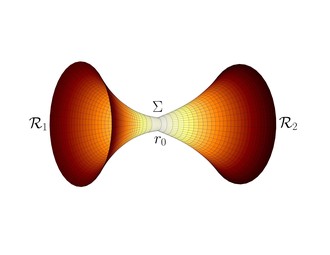
The event horizon is a unique feature of black holes. However, for a fundamental reason it is not possible to prove the presence of the event horizon in any object by using only electromagnetic waves. Therefore, data collected by the Event Horizon Telescope could never prove that M87 is a black hole. And indeed, the data collected by the EHT so far only strongly indicates that M87 may be, and most probably it is, a Kerr black hole.
The strongest indication comes from the presence of the “black hole shadow” in the EHT images of M87. The shadow is formed around an object compact enough to allow for a presence of circular light rays: the radius of such object should be smaller than about 1.5 its gravitational radius. This may also be expressed in terms of the effective potential for photon motion V(r): the potential should have an extreme. All black holes are compact enough to admit circular light rays. However, there are hypothetical “black hole alternatives” that also admit circular light rays but have no horizon. Often discussed alternatives are wormholes, which are non-vacuum solutions of Einstein's field equations that have a rather peculiar topology: they either multiply connect our universe, or are connecting two different universes. A class of them is constructed by cutting and pasting two black hole metrics in a manner similar to the method used in electrodynamics: at the joint a surface distribution of matter (charge) is present. The present EHT data is not accurate enough to reject a possibility that what we see is not a black hole, but a wormhole.
A novel idea presented in our (Maciek Wielgus, Jiri Horak, Frederic Vincent, Marek Abramowicz) paper "Reflection-asymmetric wormholes and their double shadows", that if a wormhole is not symmetric, the effective potential at the two wormhole sides has different extrema and may reflect photons in the other universe back to ours. It results in a double shadow feature in the EHT image – and this distinct and unique image topology proves that there is no horizon. Our paper is summarized in the Figure below.

Left: examples of photon trajectories (the quantity b is the impact parameter). Middle: the effective potential. Right: the ETH image topology.






